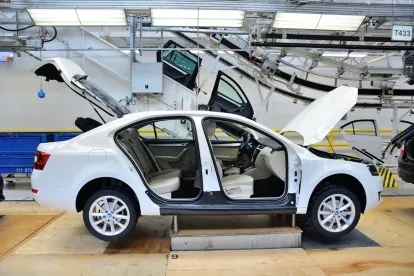On 30 November 2016 the European Commission (“Commission” or “EC”) presented its Communication on connected cars for Europe, under the more formal denomination “A European Strategy on Cooperative Intelligent Transport Systems (C-ITS)” (full text available here).
This strategic document, while certainly the most precise proposal on the matter to date, is certainly not an isolated proposal. It follows several mentions and general approaches to the matter of smart cars in other contexts, some of them more general: the Agenda for Jobs, Growth and Investment (here); the Digital Single Market (here); the Energy Union Strategy (here), had all mentioned the importance of this revolution. More precisely, the Commission approached the significant potential of the deployment of cooperative, connected and automated vehicles from the angle of the reduction of energy consumption from the transport sector in its “European Strategy for Low-Emission Mobility” (here), adopted in July 2016. And in the “Digitising European Industry Strategy” (here), it had underlined that cooperative, connected and automated vehicles were a top priority to promote the competitiveness of European industry. Even the “Space Strategy for Europe” (here) recommended the integration of space technologies into strategies addressing connected cars. At a political level, it is worth mentioning the commitment from Member States’ Governments formalized by EU Transport Ministers in April 2016 with the “Declaration of Amsterdam” (here).
In 2014 the Commission had established a C-ITS “platform”, that is, a forum for a stable dialogue among experts and stakeholders, with the intent to identify remaining obstacles to the C-ITS deployment in Europe.
The outcome of the first phase of the C-ITS platform was an important expert report (here), unanimously supported by the platform’s contributors, in January 2016. This was subsequently supplemented by a public consultation, which laid the foundations for the Communication presented yesterday and the object of this note.
Beyond the proposals included in this Masterplan, other outcomes of the C-ITS platform are being developed. The High Level Group GEAR 2030 (here) is working on this matter with a specific transport system perspective, with the aim of submitting final recommendations by mid-2017. There are also other instruments promoting high-level dialogue, in the form of industry roundtables, involving the telecom and vehicle manufacturing industry.
Some Member States are particularly active in the matter as well. This is the case of France, where its Data Protection Authority (“CNIL”) recently published the lines of its Connected Car “Compliance Package”. The CNIL already announced that once it is finalized for France, they will push this proposal to the group coordinating Data Protection Authorities (“Working Party Article 29”) as part of their presidency of the group.
The European strategy
The EC Master Plan closely follows most of the recommendations of the C-ITS Platform document of January 2016. It identifies a series of issues, and sets the actions that will be put in place to deal with them (including enabling conditions at European, Member States, public authorities and industry level) with a specific, ambitious but feasible objective: to ensure coordinated deployment of C-ITS services by 2019. Therefore, it is clear that this strategy does not set the final road map to fully resolve all the open issues which require attention and public action regarding smart cars. This is an open process, which will evolve with higher levels of vehicle automation and new measures applicable to such evolution.
But it does present a clear road map for the first years of their “deployment”, in terms that will condition other actions to follow.
-
Deployment of C-ITS services: prioritization
The EC sets priorities for a coordinated deployment of harmonised C-ITS services by Member States and industry. But while the tone of the document sounds mandatory, generalizing these services will not be done via regulatory activities, but through the strong incentives provided by the EC’s own financial instrument in support of research and infrastructure development.The EC defines a series of “technologically mature and highly beneficial C-ITS services” to be deployed quickly to let end-users and society at large benefit from C-ITS as quickly as possible. This plan includes two lists of priorities, defined as the Day 1 C-ITS Services List and the Day 1.5 C-ITS Services List. For the services included in the second list, full specifications or standards might not be completely ready for large scale deployment in 2019. Why might this be? Essentially, it relates to communication of the vehicle with the surrounding infrastructure; and with other cars about parking and similar urban services as well as smart routing. (In other words, most of the services that current users of the worldly popular WAZE app are used to).
-
Security of C-ITS communications
Cybersecurity is an essential challenge as the transport system becomes more digitized and connected. Several tests have proved the extreme vulnerabilities and risks involved in this transformation if a vehicle (or many at a time) is hacked or made the object of a cyber attack.The EC does not anticipate the details of future solutions to the problems it defines: it announces that—in coordination with the industry and other players involved—it will steer the development of a common security and certificate policy for deployment and operation of C-ITS in Europe. And, in a cryptic language, it opens the door to future EU involvement (announcing that it will “analyse whether some operational functions and governance related roles need active Commission involvement”).
-
Privacy & data protection safeguards
Connected vehicles “produce” or “broadcast” data that can be used for multiple purposes. If managed in aggregated terms, and put together with other data from public sources, they may result in “big data”: large amounts of information which can be exploited and even be monetized. This big data management of smart cars, information is not dealt with by the Masterplan. In addition, those data communicated by the connected vehicle also provide a lot of information about its user. And for this, the EC makes in this Masterplan a solemn declaration of strong legal impact: “The Commission is of the opinion that data broadcast by C-ITS from vehicles must be considered as personal data. Therefore safeguard measures are necessary and need to comply with the relevant legal base for the different processing operations of this data”. And that means the need for smart cars to comply fully with the recently adopted General Data Protection Regulation (“GDPR”), including where necessary, the obtaining of consent from end-users.Of course, this is easier said than done, and many questions will need to be answered before the privacy standards of the GDPR can be applied to smart cars as a general rule. The EC’s plan is:
-
to ask C-ITS service providers to offer clear terms and conditions to drivers, enabling them to give their freely informed consent to any processing of their personal data;
-
to work on information campaigns to create the necessary trust of end-users and achieve general public acceptance; and demonstrate the positive impacts on the transport system (e.g. safety, efficiency) while ensuring data protection compliance and privacy;
-
to develop, in consultation with EU Data Protection Authorities, a sector based Data Protection Impact Assessment template to be used for the introduction of new C-ITS applications.
-
-
Spectrum and telecommunications: a hybrid approach
Connected vehicles, even for the relatively limited level of connected services defined by the Commission as a short term priority general, require transmission/reception capabilities for a wide range of services, in various transport environments and between different actors. While drivers do not care what communication technology is used to transmit C-ITS messages, they expect to receive all information on traffic and safety conditions seamlessly across Europe. This requires combining the benefits from a mix of complementary communication technologies. The Commisison calls this “the hybrid communication approach”. Therefore, in this Masterplan the Commission details the standards and spectrum frequencies it expects to be used in a combined form to result in this hybrid approach.This approach has direct consequences: road authorities, service providers, vehicle manufacturers and industry are expected to adopt a strategy for hybrid communication—in procurement and serial production—in order to support the Commission’s established priorities.
-
Interoperability
Systems used by connected cars need to be able to interact with each other, across borders and transport modes, at all levels: infrastructure, data, services, applications and networks. This calls for EU level standardisation. But the Commission acknowledges that standardisation is not sufficient to ensure interoperability alone. It will push for EU-wide deployment specifications so that applicable EU standards are understood and applied in the same way in all European C-ITS deployment initiatives. This, of course, requires collaboration at Member State level, which is expected to happen via the “C-Roads Platform”, an initiative promoted by the Commission to link national C-ITS deployment activities, in particular regarding deployment activities for interoperability testing. -
Legal certainty
The Commission assumes that it will be impossible for the EU to deploy its plans by 2019 if investments do not converge with a proper regulatory framework. With this in mind, the Commission announces that it will be using the powers it received under the Intelligent Transport System (“ITS Directive”) (2010/40/EU). The ITS Directive gives a clear mandate to deal with matters of linking vehicles and the transport infrastructure, by the means of “delegated acts”: legislation that can be approved out of the normal legislative procedure, and in much faster terms. These and other instruments to ensure legal certainty should be ready, says the Commission, by 2018. -
International cooperation
Last but not least, the Commission deals with the essential matter of international collaboration in this matter (international, in this context, referring to the EU relationships with the rest of the world). Not only are governments interested in learning from each other and setting internationally accepted rules; industry too has a strong interest as it looks into global markets. This collaboration starts at the level of the G7, whose Transport Ministers agreed recently to further cooperate on all aspects related to the safe and effective deployment: promoting international standardisation, ensuring data protection and cyber security, addressing legal aspects and enabling the coordination of research.
Conclusion
There is a clear sense of urgency in this matter. And while fully automated driving generalised across European cities will take time, a most important effort will be made to reach the set up priorities by 2019. This requires a quite unprecedented effort of coordination of different stakeholders, including Member State and local authorities, vehicle manufacturers, infrastructure operators, telecom and service providers. And indeed, any company falling into any of these categories will need to be directly involved in this evolution, or else it will see others drafting the terms of its future business model and the regulatory framework to implement it.




 />i
/>i

